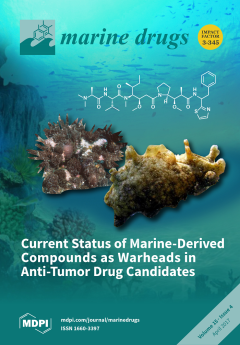1
Department of Chemistry, Biology and Marine Science, University of the Ryukyus, Nishihara, Okinawa 903-0213, Japan
2
Department of Life Science and Medical Bioscience, Waseda University, 2-2 Wakamatsu-cho, Shinjuku-ku, Tokyo 162-8480, Japan
3
Biomedical Research Institute, National Institute of Advanced Industrial Science and Technology, 1-1-1 Higashi, Tsukuba, Ibaraki 305-8566, Japan
4
General Education Center, Okinawa Prefectural University of Arts, 1–4 Shuri Tounokura, Naha, Okinawa 903-8602, Japan
5
Radioisotope Center, The University of Tokyo, 2-11-16 Yayoi, Bunkyo-ku, Tokyo 113-0032, Japan
6
Department of Microbiology, Faculty of Medicine, Graduate School of Interdisciplinary Research, University of Yamanashi, 1110 Shimokato, Chuo-shi, Yamanashi 409-3898, Japan
7
Environmental Measurement Research Institute, National Institute of Advanced Industrial Science and Technology, 16-1 Onogawa, Tsukuba, Ibaraki 305-8569, Japan
8
Department of Pharmaceutical Sciences, Toho University, 2-2-1, Miyama, Funabashi-shi, Chiba 274-8510, Japan
9
Institute of Medical Chemistry, Hoshi University, 2-4-41 Ebara, Shinagawa-ku, Tokyo 142-8501, Japan
Abstract
Bioassay-guided separation of a lipophilic extract of the crinoid
Alloeocomatella polycladia, inhibiting the activity of HCV NS3 helicase, yielded two groups of molecules: cholesterol sulfate and four new aromatic sulfates
1–
4. The structures of the aromatics were elucidated by
[...] Read more.
Bioassay-guided separation of a lipophilic extract of the crinoid
Alloeocomatella polycladia, inhibiting the activity of HCV NS3 helicase, yielded two groups of molecules: cholesterol sulfate and four new aromatic sulfates
1–
4. The structures of the aromatics were elucidated by spectroscopic analysis in addition to theoretical studies. The aromatic sulfates
1–
4 showed moderate inhibition against NS3 helicase with IC
50 values of 71, 95, 7, and 5 μM, respectively.
Full article






